Art History Early Crhistian and Byzantine Art
1/97
There's no tags or description
Looks like no tags are added yet.
Name | Mastery | Learn | Test | Matching | Spaced |
|---|
No study sessions yet.
98 Terms
Earliest continuous surviving biblical narrative cycle
Jewish art, house converted to synagogue, Interior scene of synagogue City of Dura-Europos Syria, 2nd/early 3rd century through 4th
Oldest Place of Christian Worship
House converted into Christian Chapel, city of Dura-Europos, 2nd/early 3rd century through 4th
The location of Dura-Europos….
On the edge of Roman and Persian empires made for mingling of cultural traditions
Many of the oldest known images in Christianity, Judaism, and Polythesim line the walls of this city’s temple, church, and mithraeum
dura-Europos
These lived in relative harmony
Pagan Judaism and Christianity
In Italys catacomb and Catacomb paintings, Christian’s take…
Old Pagan images and assign them new Christian meaning
Christians take Old Testament (Hebrew/Jewish) figures and… (Catacombs Italy)
Assign them new Christian meaning
Italy catacomb paintings dates
3rd - 4th
Early Christian art during this period… also referred to as
Italy Catacombs, Paleo Christian
Is todays Christianity still paleo christian?
No
Christianity was mainly in
urban areas
Written on the walls of both Jewish and Christian Catacombs
Know thy self
This catacomb has vaults (barrel, etc)
Christian Catacombs
One of the paintings showcasing Jonah and the whale
catacombs of St. Peter and Marcellinus
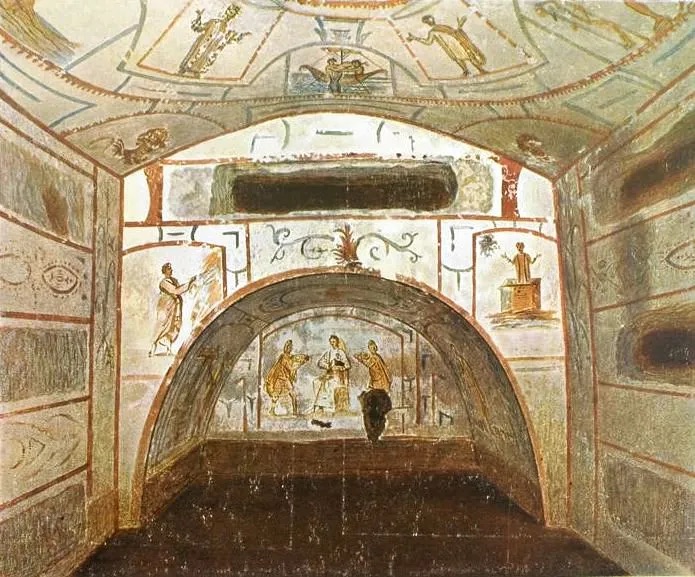
catacomb of St. Peter and marcellinus
Painting Christian Catacombs
Italy, Rome
4th century
OLD PAGAN IMAGES ASSIGNED NEW MEANING
JONAH AND THE WHALE
ORANT
GOODSHEPARD
BANQUET MEAl
ORANT -
Praying figure (shown in St. Peter)
Why chose Christianity over Pagan cults?
Pagan cults were based on myths and legends and possible afterlife, Christianity believed to be historical fact and promised afterlife
___ Martyered christians but protected their funeral areas
Rome
Jonah and the whale-
Jonah is an Old Testament figure assigned new Christian meaning. Jonah prefigures Christ’s resurrection and is an image of individual salvation and resurrection
Good Shepard-
Both pagan and New Testament image. EC now see It as being an image of Christ and his flock.
Only after Christianity becomes an official religion is Christ….
Depicted as imperil ruler of heaven with purple robes, throne, and halo
In EARLY Christian art Christ is depicted as
Young shepherd, youthful Shepard or teacher
St. Peter Funeral banquet meal-
On anniversary of a death meal banquet would be held in the tomb
Good Shepard is both a…
Old Testament and pagan image
Early Christian sculpture - unlike later church art….
EC funerary (catacomb and sarcophagus) art was not meant to be didactic (teaching)
Do we ever see a beard on Christ in early Christian art?
No

Santa Maria Sarcophagus
Sarcophagus Relief sculpture, Rome
Early Christian Sculpture
BEFORE CHRISTIANITY LEGALIZED
CHRISTIANS TAKE OLD PAGAN IMAGES AND GIVE NEW MEANING
JONAH AND THE WHALE
ORANT FIGURE
GOOD SHEPARD
DOVE W JONAH
ABRAHAM AND ISSAC
Pieces show Jonah and the whale AND good Shepard
St Peter and Santa Maria
Philosopher (Santa Maria)
Seated figure of pagan (Greek) philosopher. Which to Christian’s is Christ as author of the true word of god
Dove with Jonah (Santa)
Baptism (so is Jonah and the whale), necessary for rebirth and salvation
Abraham and Issac (Santa)
God/Christ sacrifice
Why are there no crusifiction scenes? Why so?
all Christian Churches have an
apse
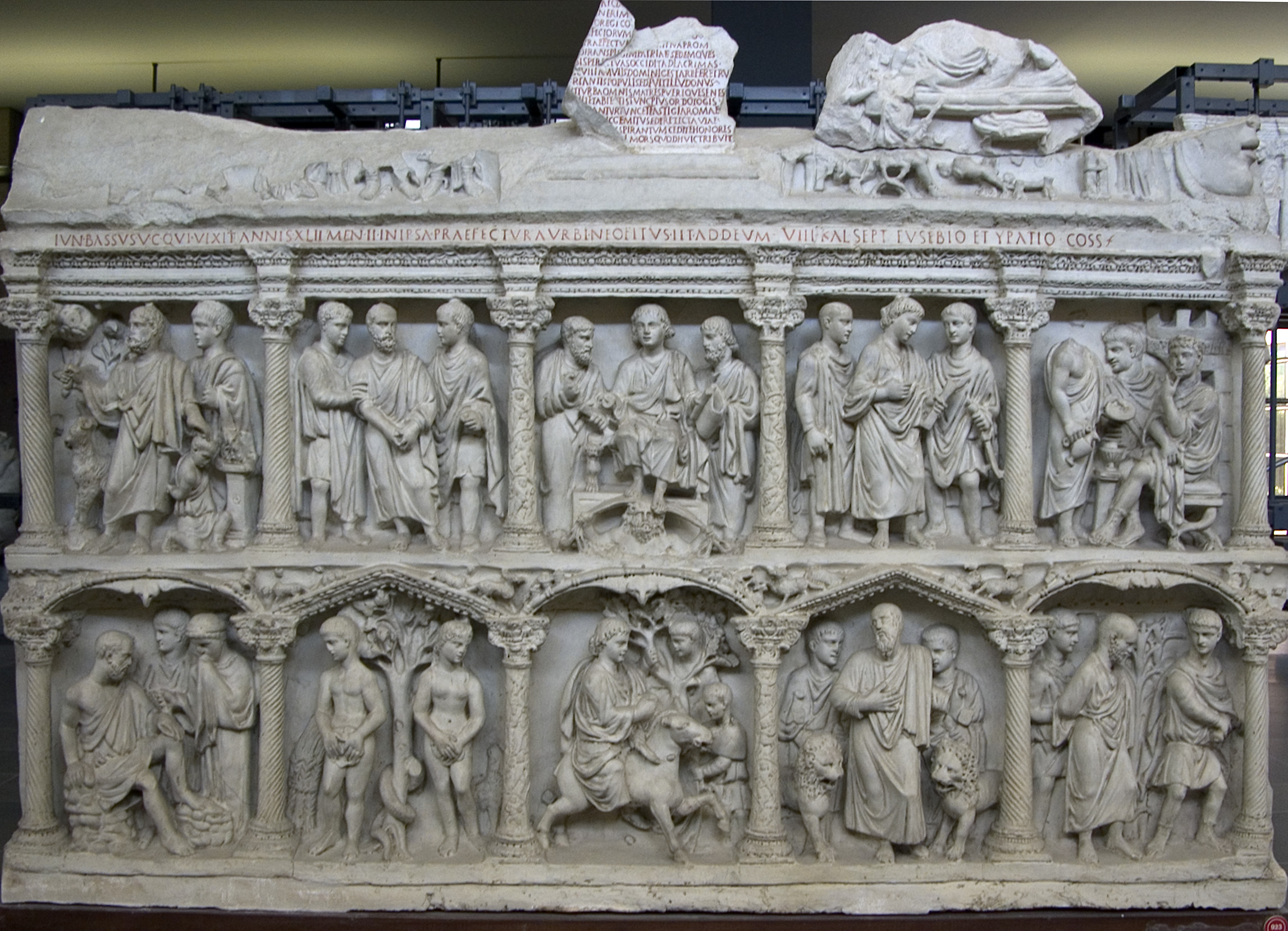
Sarcophagus of jinius bassus
Early Christian
Sarcophagus relief sculpture
Take Old Testament themes and assign them New Testament significance and meaning
Christ depicted as a teacher with peter and Paul
AFTER CHRISTIANITY LEGALIZED
Christ riding into Jerusalem
Daniel w lions, dam and eve, Abraham and Issac
Why did the early Christian churches use mosaics instead of paint
Reflects light
Early Christian and Byzantine both have
Apses (alter) and clearstory (windows)
Recognized as the oldest place of Christian worship in ROME
Church of Santa Pudenziana
The iconography of the apse mosaic is unique and foreshadows imagery that will be used in Byzantine and early Medieval art
Church of Santa Pudenziana
Showcases a small cruciform cross structure
Mausoleum of Galla Placidia
Abstraction and 2D, content over form =
Byzantine
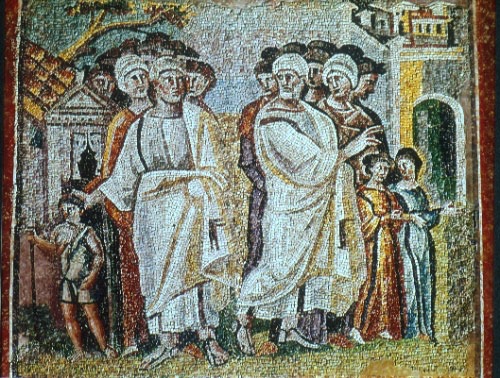
The Parting of lot and Abraham
Santa Maria Maggiore
OT THEMES ASSIGNED NEW CHRISTIAN MEANING
LATE ANTIQUE STYLE
5th century classical
Mosaics early Christian
Combination of EC and Byzantine Mozaics
St Apollinaire Nouvo
Secular
Non religious
What is the name of an early Christian Church?
old saint peters basilica

St. Peter’s basilica
Church was a secular assembly
St. Peter’s basilica
Old St. Peter’s basilica church was what type of plan
Longitudinal (rectangular)
Both of these places were a place for standing in St. Peter basilica
Transept and martyrium
basilica-
Roman architect structure for courts of law and business. Basis for the EC church. Longitudinal plan.
nave-
Center isle of a longitudinal plan.
Clearstory-
Row of windows above
Side isles-
Isles of both sides of the nave
Transept-
The arms of the basilica or church. It’s intersection (+) (longitudinal portion) called the crossing
Apse-
Semicircular area at the east end of a church, type of triumphal arch.alter in front of the apse
Cathedral-
Place for bishops chair
Liturgy-
Rite or body of them prescribed for public worship.
In EC churches women and men sit..
Women- north side men- south
In EC, men and women sit in the
Side aisles
EC churches have… (8)
Basilica (longitudinal rectangular plan)
Nave
Side aisle
Clerestory
Transept
Apse
Cathedral
Liturgy
Men cant sit with each other on the
East
You accommodate a dome to…
A noncircular base by means of a pendentive

Haggis Sophia, Constantople
Early Byzantine Architecture
LONGITUDNAL AND CENTRALIZED PLAN (basilica and centralized)
Historic contribution to world architecture
Dome carried by pendentives
Built 6th cen, 537
2, first one failed, first version was a fuse of both plans
Second one longitudinal with centralized vaulted shapes
GALLERY - men and women sitting
Pendentive-
Byzantine, comes from Latin “to hang”. First used on a large scale in the construction of Hagia Sofia
In the Hagia Sophia … men and women sit
Men 1st floor, women 2nd (gallery)
Ambulatory-
Walkway, needed for the gallery
Pier-
Architectural member that carries concentrated load
buttress-
To support
Byzantine church have….. (9)
Apse
Clerestory
Pendentive
Buttress
Nave
Side aisles
Ambulatory
Gallery
Pier
Does anybody get to see the service in the Hagia Sophia?
No, curtains. Emperor and priest only
We leave constantople, the east, and return west, why?
Constantine contributes to weakening the Roman Empire
San vitale-
best example of a centralized Byzantine longitudinal plan. Clerestory, ambulatory, piers, gallery
2 more features in Byzantine art
Gallery and ambulatory
Tesserae-
Small pieces used to make mosaics
Early Byzantine mosaics- its mass was _ held in full view of the faithful
Not
Gold background =
Byzantine
Compare and contrast mosaics of EC Galla Placidia with Byzantine Saint Apollinaire among sheep
Galla far more 3D and indicated naturalistic space and appropriate shadows. St, app has animals and saints with little to no volume. Appear stacked and 2D. Both share similar elements however
Why are the positions of figures and placement of mosaics important in Byzantine?
They represent a fusion of the protocol of the court and the liturgy of Eastern Orthodox church.
here political and religious rule are united, which was tradition in the east
San vitale, Ravenna, italy
Byzantine San Vitale, Ravenna, Italy is a stylistic combo of…
Early Christian, classical, and Byzantine. Theme of mosaics salvation of the world and reenactment of the Eucharist
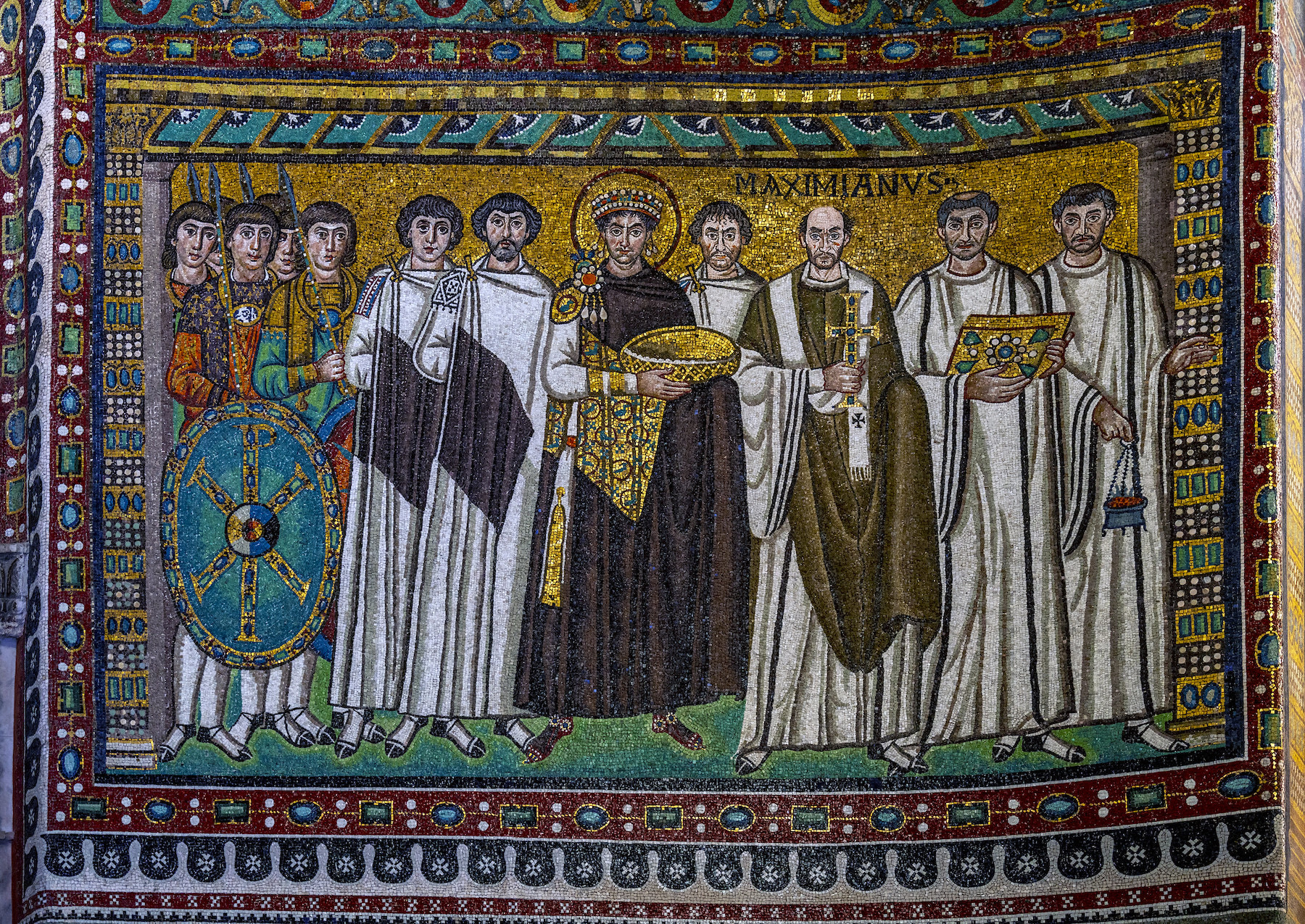
Justinian with bread and attendants + bishop Maximianus
San Vitale
6th century
God given right to be emperor
Early Byzantine
North wall of apse
Space doesnt matter

Theodora with wine and attendants
San vitale
6th century
Early Byzantine Mozaic
South wall of apse
Wine offering of liturgy ceremony.
Space doesnt matter
Are there any icons in the west?
No, strictly eastern orthodox religious creation
Did Justinian change laws to be with Theodora
Yes
Icons at st Catherine are rare, why?
Few survived
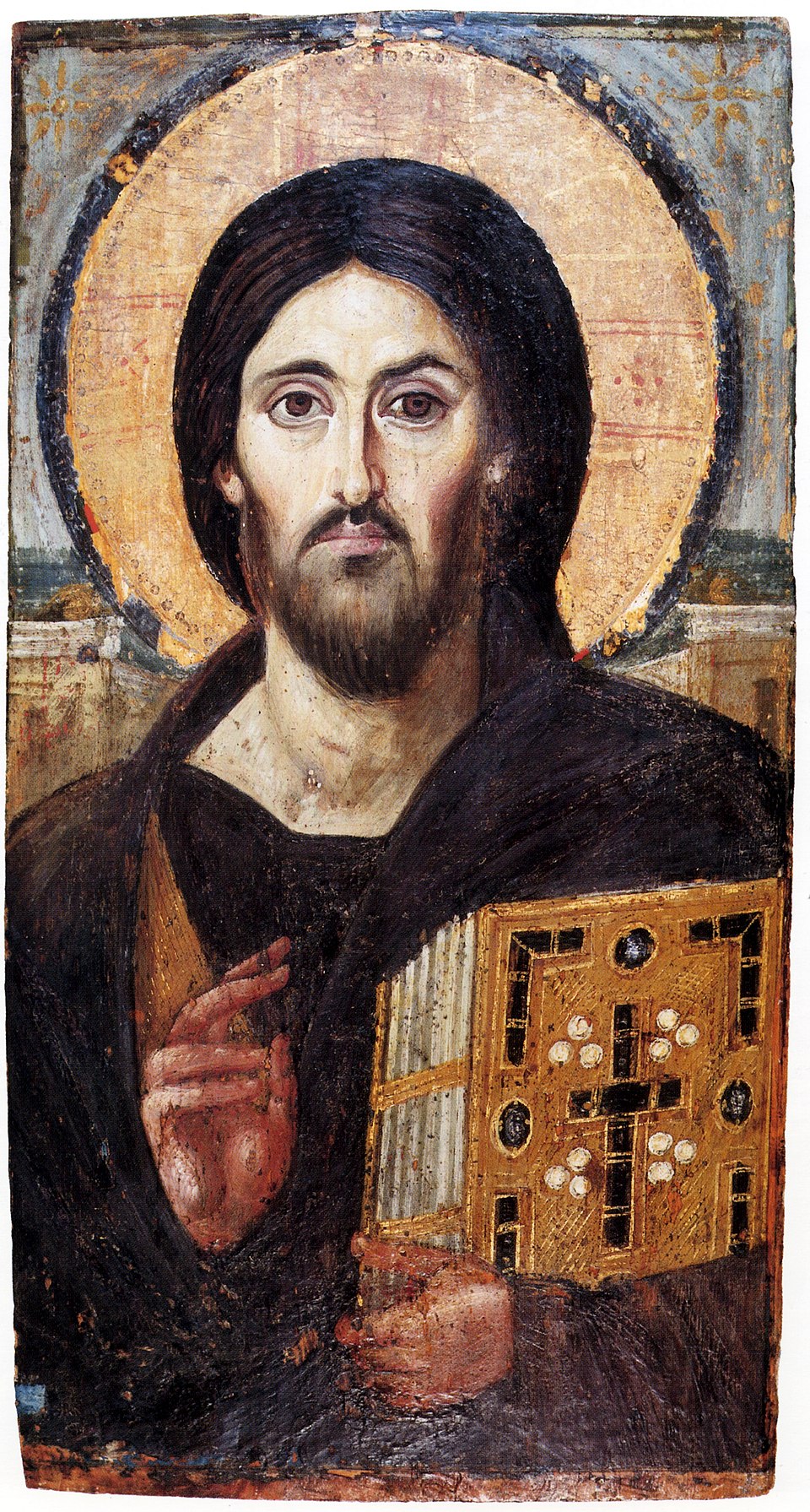
Mt. Signal Christ Icon
550 6th cen
early Byzantine icons
NATURALISM< BEFORE 8TH CEN CONTROVERSY
Icon meant to be a window to Christ, means to establish a link between him and the viewer.
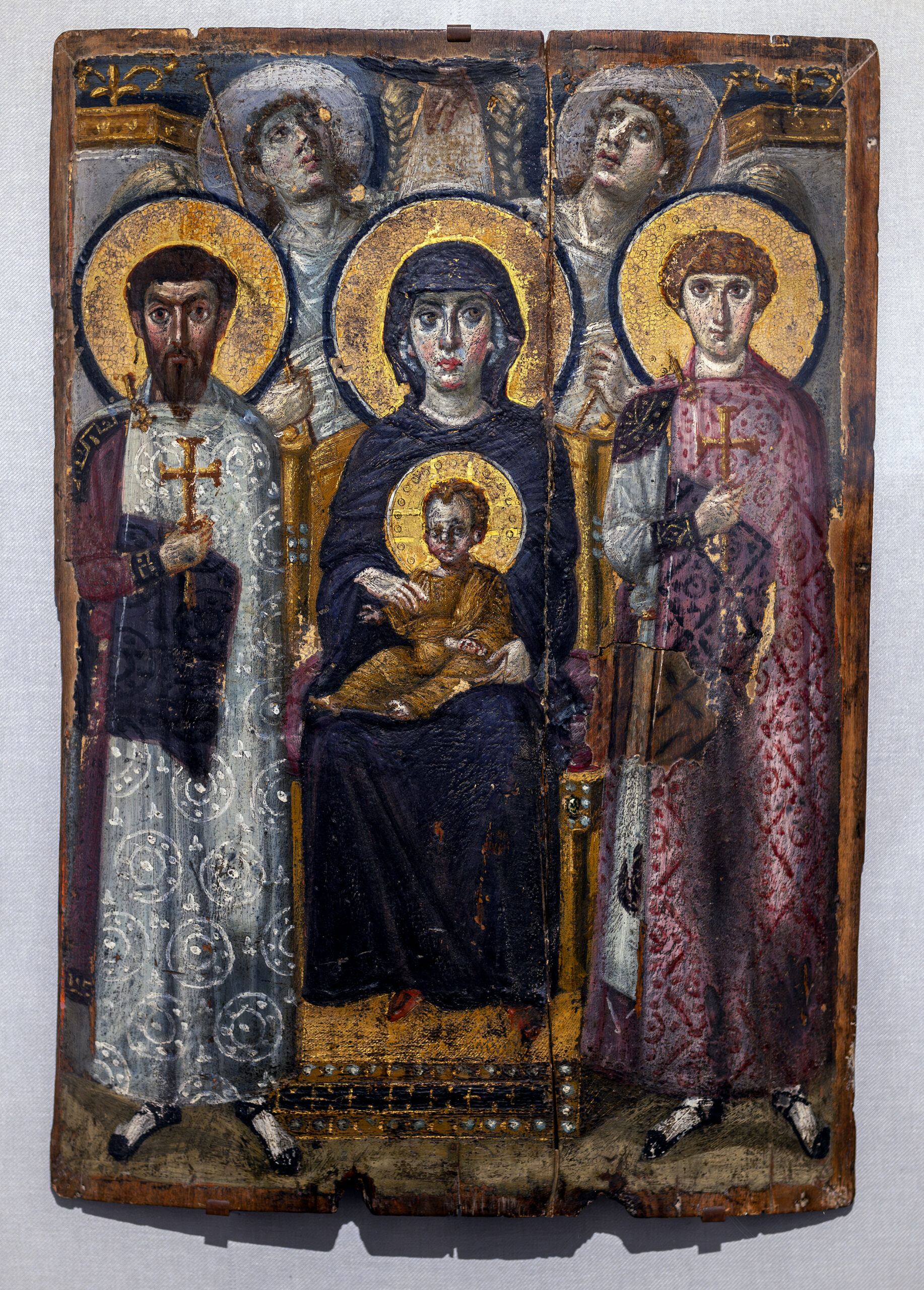
Mt. Sinai Icon, Virgin and Child
625 7th cen
Early Byzantine
Reflects growing tensions with icons, therefore eye contact is lost
Far more stylized and flat
Less naturalism= less change of idoltary
Icons and religious art = , condemned it as such
idolatry, iconoclastic
Theotokos (she who bore christ) image is only
Byzantine (both Sinai images and Vladimir show this)
best example of rejection of iconoclasm
Vladimir Virgin icon

Vladimir Virgin icon
MIDDLE BYZANTINE
BEST EXAMPLE OF REJECTION OF ICONOCLASM
12th century
Tempera on panel
Marks end of Roman Catholic rule
Late Byzantine, deesis, turkey, Hagia Sophia 13th cen
Iconostasis-
High screens with doors and tiers of icons
Because of Constantine, Ravenna Italy….
Became an outpost of the Byzantine empire on western soil
In 5th century art…
Transition from EC to Byzantine style was gradual
Who wants to destroy icons
Leo the third
Old St. Peter church has a
Timbered roof
Condemns icons as idoltry
Iconoclastic movement
Who made Christianity legal
Constantine